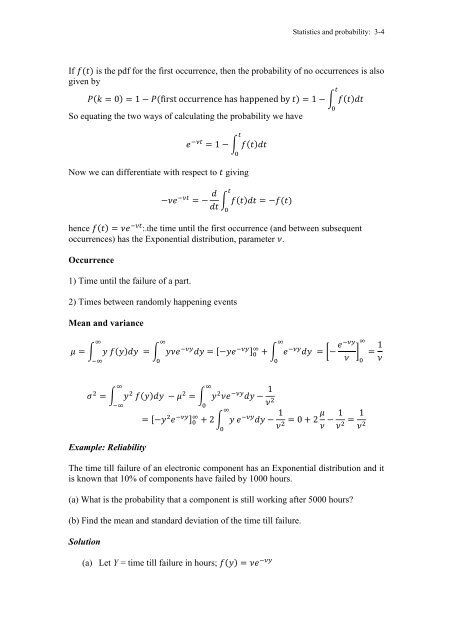3. Continuous Random Variables
3. Continuous Random Variables
3. Continuous Random Variables
You also want an ePaper? Increase the reach of your titles
YUMPU automatically turns print PDFs into web optimized ePapers that Google loves.
Statistics and probability: 3-4<br />
If is the pdf for the first occurrence, then the probability of no occurrences is also<br />
given by<br />
So equating the two ways of calculating the probability we have<br />
Now we can differentiate with respect to giving<br />
hence :.the time until the first occurrence (and between subsequent<br />
occurrences) has the Exponential distribution, parameter .<br />
Occurrence<br />
1) Time until the failure of a part.<br />
2) Times between randomly happening events<br />
Mean and variance<br />
∫<br />
∫<br />
Example: Reliability<br />
∫<br />
∫<br />
[ ] ∫<br />
∫<br />
∫<br />
[ ] ∫<br />
The time till failure of an electronic component has an Exponential distribution and it<br />
is known that 10% of components have failed by 1000 hours.<br />
(a) What is the probability that a component is still working after 5000 hours?<br />
(b) Find the mean and standard deviation of the time till failure.<br />
Solution<br />
(a) Let Y = time till failure in hours;<br />
∫<br />
[<br />
]



